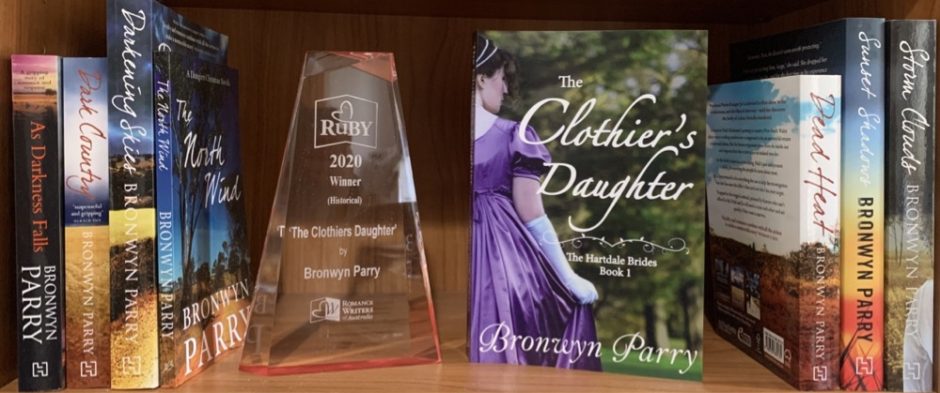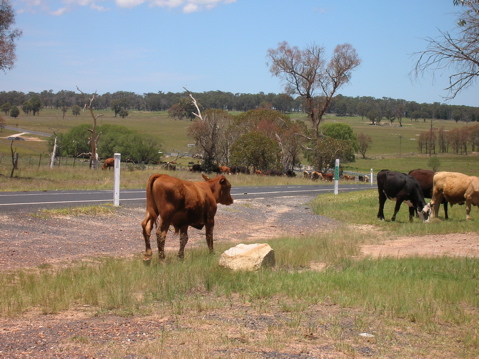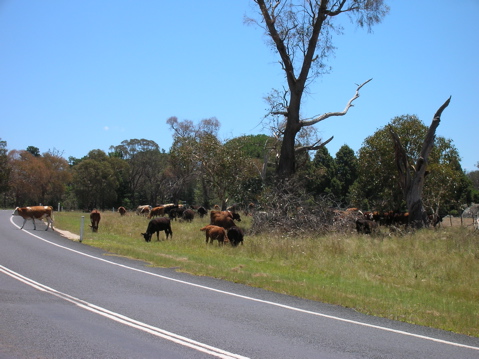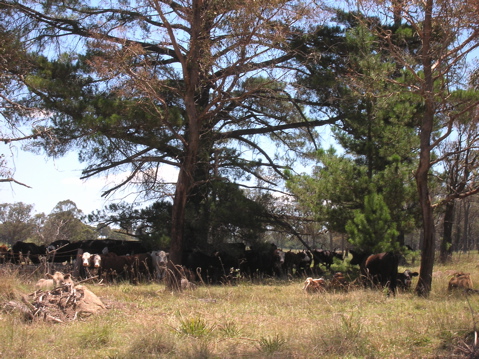While many areas in the state are still in drought, we’ve been lucky this past couple of months to have had a reasonable amount of rain. Not quite enough to fill the dams, but the tanks are full, and the grass is the longest and greenest I’ve ever seen it around here.
The main road into town is a stock route, part of a network of roads, tracks and reserves that are an important part in Australia’s grazing history. Stock routes originally enabled the movement of stock between properties and markets; these days, most stock are transported to market by truck, but the stock routes still play a critical role, providing alternative grazing in times of drought, and enabling graziers to keep some stock rather than having to sell it off when their own paddocks are dust. Mobs can be out in the ‘Long Paddock’ for months, accompanied by a few drovers and their dogs, horses and bikes.
For the past couple of weeks, there’s been a large mob of cattle out on the main road, gradually moving up and down the road, overnighting in the Travelling Stock Reserves that are located every five or so kilometres. For a couple of nights, they camped on the first kilometre of our minor dirt road, penned in by a very rough temporary fence, which I had to open and close to get home the other day – I managed to avoid the barbed wire, fortunately!
Temporary fences aside, I don’t mind the cattle on the road. It slows the trip into town somewhat, as you have to slow down to a crawl in places, and the mob can spread over a couple of kilometres in a lazy day’s grazing, but it’s part of Australian bush life, and I’d rather see stock out droving rather than starving in their home paddock, or going to the abattoir for a few cents a kilo. Plus there’s something quite peaceful about cattle grazing in the long grass beside the road, just mooching along, strolling across the road when the grass seems greener or longer on the other side, finding a nice shady tree in the middle of the hot summer’s day….
You don’t see this so often in eastern NSW, but in the west of the state, and on back roads, it’s reasonably common. I remember one trip to Canberra on the back roads, some years ago when the drought was terrible, and I passed through more than twenty mobs of cattle and sheep in one day, the long paddock their owners’ only hope of retaining some stock.
I confess to a little envy, though, for life on the road – although the realistic side of me wouldn’t really want to do it for long! Being a writer, though, I can give my characters experiences like that – in As Darkness Falls, Bella spent a lot of time, as a youngster, with her drover father, out on the roads in the west of NSW.
Australia Day is tomorrow – so, when we’re celebrating the great things about this country, I’ll be thinking not about beaches, but about the road through the bush, or over the flat plains, and a mob of cattle, mooching along in the sunshine.




I’ve got the shivers–but then, you have a great way of painting vivid pictures with few words.
There is something incredibly appealing about a way of life that adheres to old traditions while incorporating modern conveniences (like those bikes or trucks), isn’t there?
I wish you could come and experience it for yourself, AL!
Yes, old traditions – and I think that slower pace, albeit with modern conveniences – is appealing! Perhaps it’s the imagined sense of freedom, the not being tied to the everyday ‘normal’ – but then, there are tasks and responsibilities for the drovers, too, and they can’t be escaped from, no matter the weather – pitching camp, breaking camp, always watching the stock, herding them in the right directions, on to the road in the morning, off the road into a stock reserve at night… it would be a continual rhythm of work.